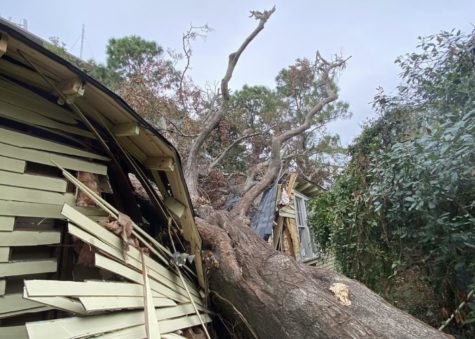Tulane upgrades forecasting, generators as hurricane season nears height
August 31, 2022

More generators and three storm forecasts are among the new changes Tulane University has enacted this hurricane season, a year after Hurricane Ida pounded the state, downing power lines in New Orleans and forcing students to return home for a month.
Tulane has three forecasters on call: the National Hurricane Center, Accuweather and local meteorologists. The school will consult each one if a hurricane threatens New Orleans this fall.
“We just have to be prepared to make decisions quickly,” Jason Ferguson, executive director of emergency management at Tulane, said. “I’m confident that we are equipped to do that.”
Ferguson said the three separate forecasts should help the university best understand where a storm is heading and how fast.
Bernhard — the engineering company Tulane hired this year to improve campus utilities — said the firm has added more generator power to campus since they joined the university in January.
Much of New Orleans lost power for days or weeks last year when the city’s main transmission line collapsed into the Mississippi River.
“We understand that there are regional challenges to the power grid,” Ferguson said. “We have made significant strides forward to ensure that where backup power is needed, we are taking steps to implement that.”
Others raised questions about storm forecasting in an era of climate change.
“Hurricanes are stronger, faster now,” Jesse Keenan, associate professor of real estate at Tulane and climate change specialist, said. “We need to be able to make tougher decisions earlier on.”
Keenan said uncertainty is inevitable in any forecast. The result: “If you see a storm coming, don’t wait for someone to push you out.”
The university is working to push messaging out faster so students can make their own evacuation decisions before a storm hits, Ferguson said.
“Every person should have a plan of what they would do if they needed to quickly evacuate,” he said.
Tulane has also ramped up training in the Federal Emergency Management Agency Incident Command System, a program that teaches personnel how to respond to an emergency. Ferguson estimated around 200 staff members have gone through emergency response training so far.
The university is also part of the National Intercollegiate Mutual Aid Agreement, which allows Tulane to call on other colleges and universities for personnel or resources in the event of a storm.
Ferguson said each hurricane is different, but Tulane will evacuate “as soon as it’s apparent to us that we are expecting to sustain major storm impacts.”
Last year, Hurricane Ida’s unpredictable path left approximately 2,000 students sheltering-in-place in residence halls, the Lavin-Bernick Center for University Life and the Commons. Tulane evacuated those students to Houston on 37 coach buses after the storm.
Emergency Preparedness and Response Manager Donald Veals said last year that the university keeps an out-of-state bus service on standby each hurricane season. Veals did not return requests for comment this week.
The Gulf of Mexico has remained quiet lately, marking a slow start to a hurricane season widely predicted to unleash more storms than usual. The formal hurricane season stretches from June 1 to Nov. 30. August and September have historically been the most active months.
But Keenan urged caution.
“The old playbook isn’t going to work,” he said.









Leave a Comment